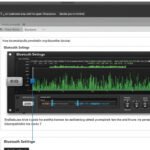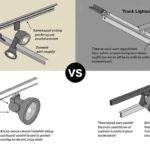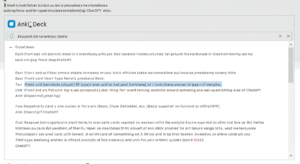When it comes to modern lighting systems in commercial, industrial, and even residential settings, track lighting and busstrut lighting are often mentioned as flexible and efficient options. However, despite some surface-level similarities, these two systems are fundamentally different in terms of structure, application, and capabilities. So, what’s the difference between track lighting and busstrut lighting?
This article will walk you through the key distinctions between track lighting and busstrut lighting, explain how each system works, and help you determine which one might be the better fit for your space or project.
What Is Track Lighting?
Track lighting is a lighting system where multiple light fixtures are mounted on a continuous track device. This “track” is typically mounted on ceilings or walls and provides both the electrical power and mechanical support for the lights.
Key Components of Track Lighting
- Track (Rail): A linear structure that carries electricity and holds the fixtures.
- Track Heads: These are the actual light fixtures, which can be moved and adjusted along the track.
- Connector and End Feed: Components that connect the track to the power supply.
Track lighting is popular in residential settings, galleries, showrooms, and retail spaces due to its adjustability, clean aesthetics, and directional lighting.
What Is Busstrut Lighting?
Busstrut lighting, also known as busway or busbar lighting systems, is an advanced electrical and lighting system used primarily in industrial and commercial buildings. It consists of a rigid metal housing that contains copper or aluminum conductors (busbars) running along the entire length of the unit. Light fixtures and electrical devices can be plugged into the busstrut without hardwiring.
Key Components of Busstrut Lighting
- Busway/Busstrut: A metal housing containing insulated busbars for power distribution.
- Tap-Off Units or Fixtures: Devices or lights that can be attached at any point along the busstrut.
- Mounting Systems: Hardware used to suspend or secure the busstrut system.
Busstrut lighting allows for plug-and-play style installation and is ideal for facilities requiring frequent layout changes, like warehouses, factories, laboratories, and data centers.
Core Differences Between Track Lighting and Busstrut Lighting
Let’s break down what’s the difference between track lighting and busstrut lighting across several essential factors:
1. Electrical Capacity
- Track Lighting:
- Designed for lower voltage and current loads, typically supporting only light fixtures. Track lighting is not suited for high-powered industrial machinery or devices.
- Busstrut Lighting:
- Can handle much higher electrical loads. Busstrut systems can power not just lighting but also heavy equipment, HVAC systems, and more.
Winner: Busstrut lighting for versatility in electrical capacity.
2. Installation Complexity
- Track Lighting:
- Generally easy to install, especially in residential or small commercial spaces. Can be mounted with simple brackets and powered via a junction box.
- Busstrut Lighting:
- More complex to install due to the higher electrical capacity and rigid structure. Installation often requires electricians and may involve inspections or permits.
Winner: Track lighting for simpler, quicker installation.
3. Flexibility and Modularity
- Track Lighting:
- Offers some flexibility—fixtures can be moved along the track and aimed in different directions, which is useful for accent or directional lighting.
- Busstrut Lighting:
- Highly modular. Devices and lights can be added or repositioned without any rewiring. Some systems allow for tool-free installation of components, making it ideal for frequently changing environments.
Winner: Busstrut lighting for unparalleled modularity.
4. Cost
- Track Lighting:
- More cost-effective upfront. Affordable for residential and light commercial uses.
- Busstrut Lighting:
- Higher initial cost due to materials, installation, and electrical design—but can result in long-term savings in flexible environments.
Winner: Track lighting for budget-conscious projects.
5. Applications
- Track Lighting:
- Best for lighting art, merchandise, workspaces, and interiors where directional lighting enhances visibility and design.
- Busstrut Lighting:
- Preferred in industrial, lab, and large-scale commercial environments that require scalable, safe, and customizable electrical distribution.
Winner: Depends on use case. Track lighting suits homes and showrooms, while busstrut lighting dominates factories and warehouses.
6. Power Distribution Capabilities
- Track Lighting:
- Only distributes power to light fixtures that are compatible with the track’s voltage.
- Busstrut Lighting:
- Acts as a full-fledged power distribution system. Can support lighting, fans, tools, robotic arms, and more—all from the same track.
Winner: Busstrut lighting for integrated power solutions.
When to Choose Track Lighting
Choose track lighting if:
- You’re working in a residential or small commercial space.
- You want accent or spotlight-style lighting.
- You need a sleek, minimalist aesthetic.
- You don’t anticipate frequent changes in layout.
- You’re on a limited budget and only need lighting, not power distribution.
Examples:
- Art galleries
- Home offices
- Retail shops
- Restaurants and cafés
When to Choose Busstrut Lighting
Choose busstrut lighting if:
- You’re setting up an industrial or high-tech facility.
- You need to power more than just lighting (e.g., equipment or machinery).
- Your layout may change frequently.
- You require robust, reliable electrical distribution.
- You value long-term scalability and safety.
Examples:
- Manufacturing plants
- Warehouses
- Research labs
- Data centers
- Automotive workshops
Pros and Cons Summary
| Feature | Track Lighting | Busstrut Lighting |
|---|---|---|
| Electrical Load | Low | High |
| Installation | Simple | Complex |
| Flexibility | Moderate | High |
| Modularity | Medium | Excellent |
| Initial Cost | Low | High |
| Application | Decorative, retail | Industrial, heavy-duty |
| Power Support | Lights only | Lights + Equipment |
Future-Proofing Your Space
If you’re designing a flexible work environment or planning for growth, understanding what’s the difference between track lighting and busstrut lighting can help future-proof your investment. While track lighting offers affordability and design aesthetics, busstrut lighting is all about versatility, safety, and efficiency at scale.
With increasing demand for smart and reconfigurable buildings, many commercial setups are shifting toward busstrut systems to accommodate changing workflows and automation. On the other hand, track lighting continues to thrive in environments where design, lighting control, and ambiance matter most.
Final Thoughts
So, what’s the difference between track lighting and busstrut lighting? It boils down to purpose and performance.
- Track lighting is great for aesthetic and directional lighting in smaller spaces.
- Busstrut lighting is a powerhouse system built for demanding, change-heavy environments.
Both systems serve vital roles in modern lighting and electrical design. The best choice depends on your space, power requirements, and long-term plans. Whether you’re showcasing art or powering robotics, there’s a system built for your goals.













